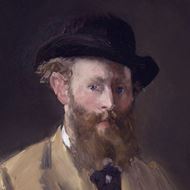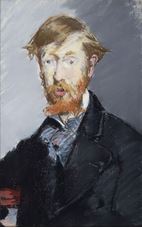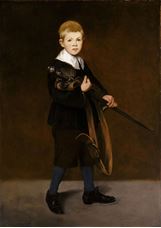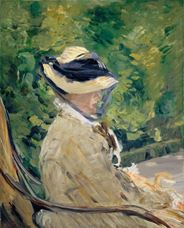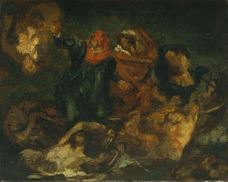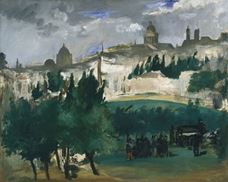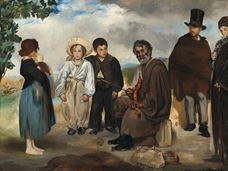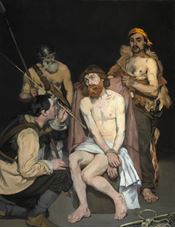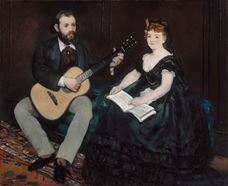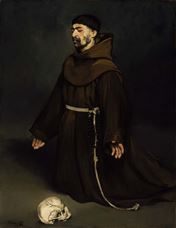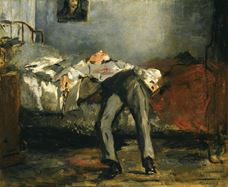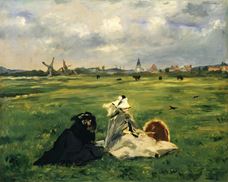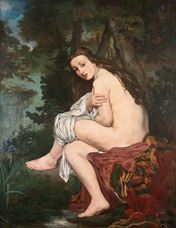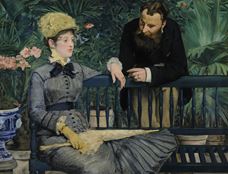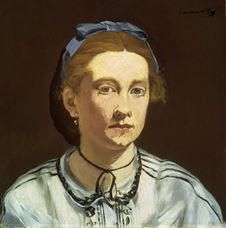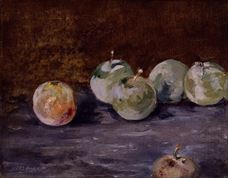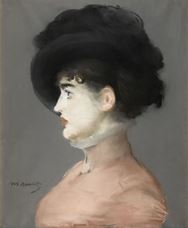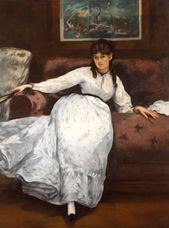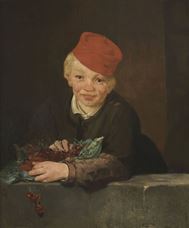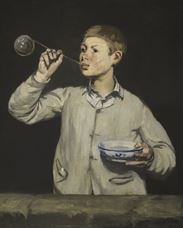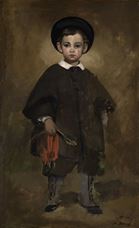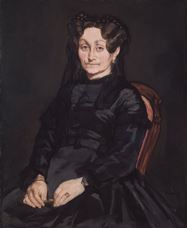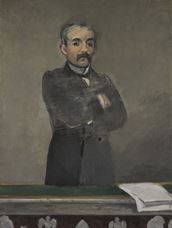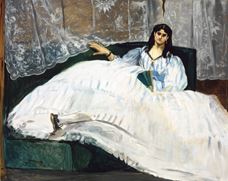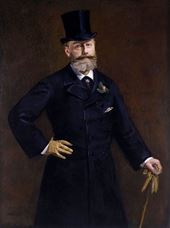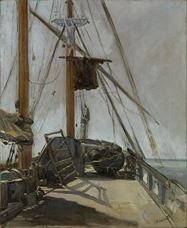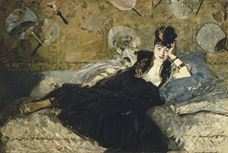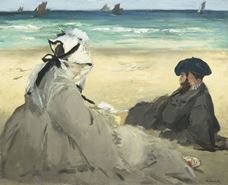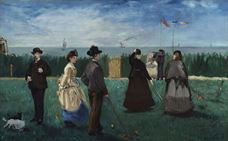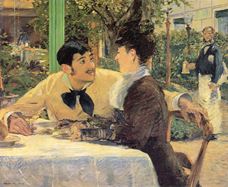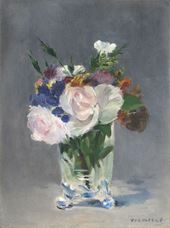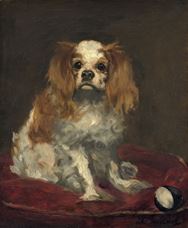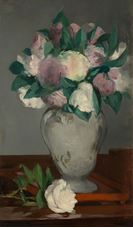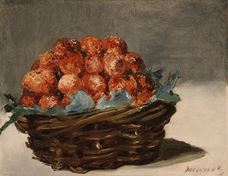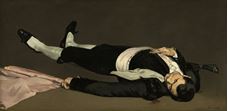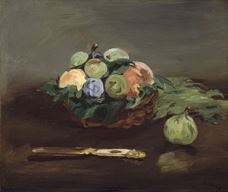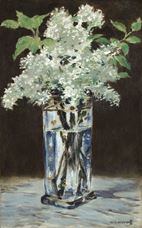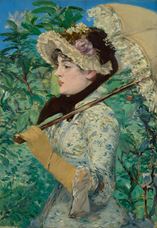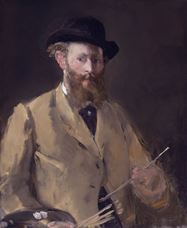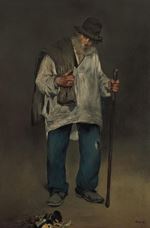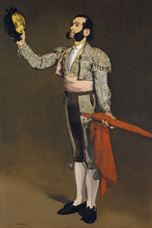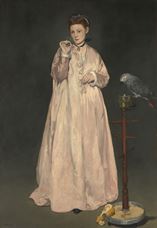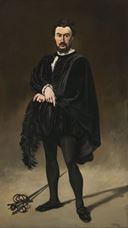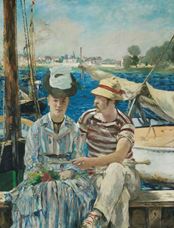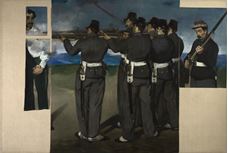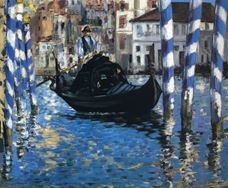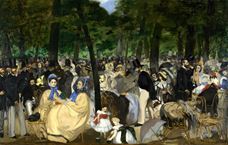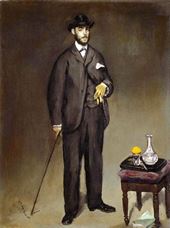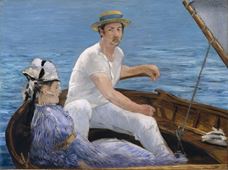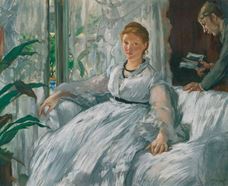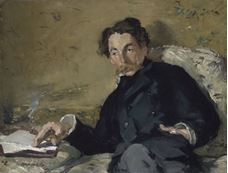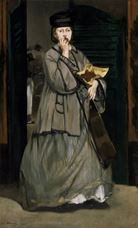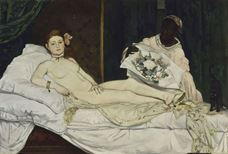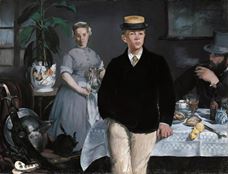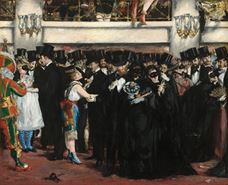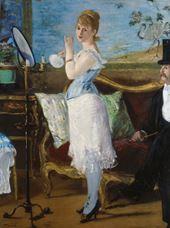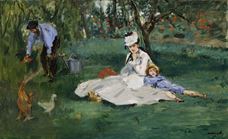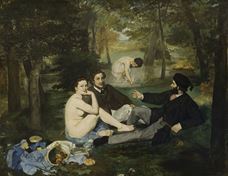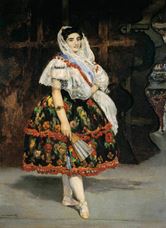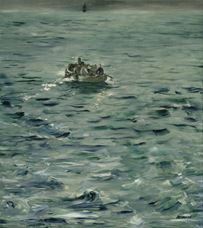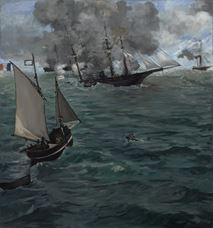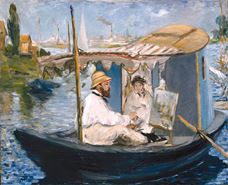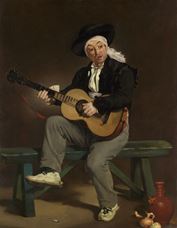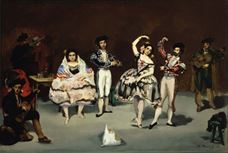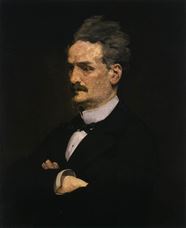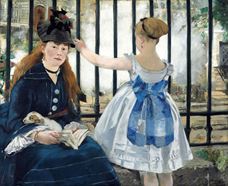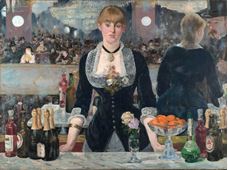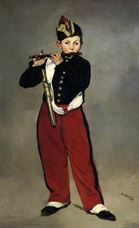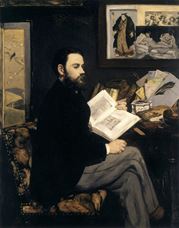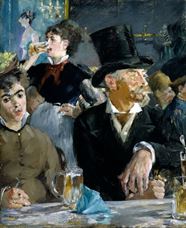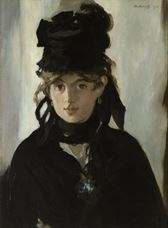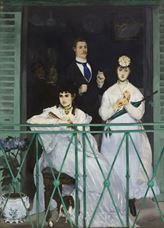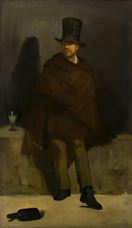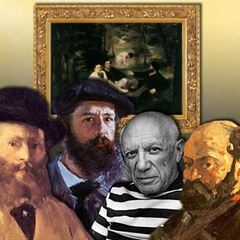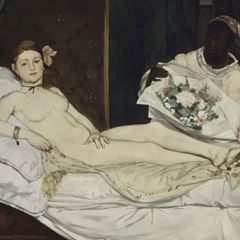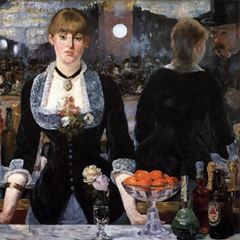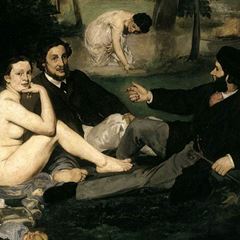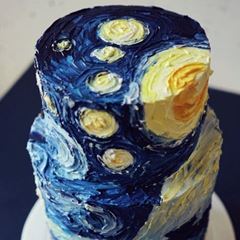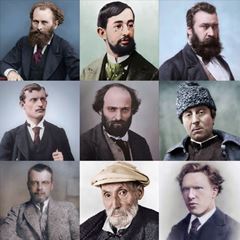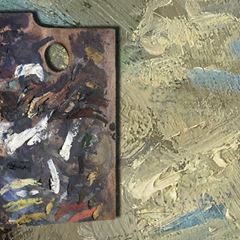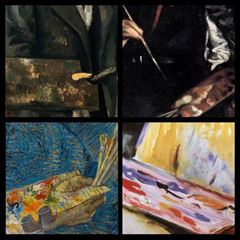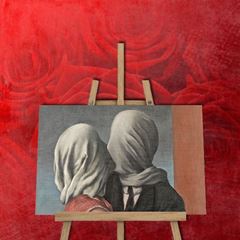Édouard Manet was born in Paris on 23 January 1832. He was the eldest of the three boys of the couple Auguste Manet and Eugénie-Désirée Fournier. His mother was the goddaughter of the Swedish crown prince Charles Bernadotte, his father was a judge.
Manet enrolled at Rollin College when he was twelve years old. Here he met Antonine Proust, with whom he would become a friend throughout his life. At an early age, he became interested in painting. The wealthy family of the Paris bourgeoisie wanted their son to study law. Only his uncle Charles Faurnier supported his nephew and encouraged him to paint. His family decided Manet would be a sailor. He had applied to maritime school but had not succeeded in the entrance examination.
In 1848 he set out for Brazil with a training ship called ’Le Havre et Guadeloupe'. His journey to Rio de Janeiro further strengthened Manet's desire to turn towards art. In 1849 he returned to France and tried entering the maritime school again but failed a second time. He was now determined to become an artist and in 1850, with the permission of his parents, he began to work with Antonin Proust in the atelier of Thomas Couture, the representative of the historical painting. Even though his master Couture's work contradicted his own conception of art, he spent six years with him.
While he was studying in the workshop, in his free time, he went to the Louvre Museum and copied the works of the old masters. During this period, he went to European countries such as Germany, Italy, and Holland, and visited large museums. He also made a replica of Titian's Venus of Urbino in Florence, where he inspired the painting "Olympia".
Manet had endeavored to gain acceptance and positive criticism by Salon and the art community throughout his career. In 1856 he rented a workshop with Albert de Balleroy, who was known with hunting pictures. He made his The Absinthe Drinker painting in his workshop and sent it to the Paris Salon Exhibition held in 1859 for the first time, but his painting was turned down. This had caused disappointment to Manet. However, he continued his work and tried to improve himself. In 1862, Manet met Parisian Victorine Meurent. Victoire's favorite model, which posed many times for Manet, had a special place in his work in the 1860s.
In Manet's works, the color was always at the forefront, and in the 1860s he discovered the color qualities he sought from the seventeenth-century Spanish masters. He exhibited his paintings in the art dealer Louis Martinet's gallery in March 1863. common feature of these paintings, which he completed in 1862, was that his painting reflected his admiration for Spanish painting. His paintings were also on display "Lola de Valence", "Spanish Ballet" and "Music in the Tuileries Gardens". Manet had not yet visited Spain. His knowledge of Spanish painting was limited to collections and reproductions in museums. Manet's palette and style would inspire impressionists after him. Manet had not yet made an outdoor picture and was interested in direct color observations. He had found the color that future impressionists seek in living nature.
Two months after the Martinet Gallery exhibition, only half of the thousands of paintings presented to the Salon, an annual exhibition in Paris, were accepted. Shortly before the opening, Napoleon III came to the gallery and ordered all the rejected paintings to be exhibited. In this separate exhibition known as the Salon des Refusés, Manet's painting "The Luncheon on the Grass" was also present. The naked woman sitting between the two men in the picture was found unethical by some critics. The picture created a scandal in a short time. The painting ’Olympia', which was completed in 1863 and exhibited at the Salon in 1865, was also the subject of criticism. The picture was depicted as a naked woman lying down on the bed. Throughout the history of art, although it was a topic that was studied periodically, it caused a great surprise and scandal.
In 1863, Manet married Dutch pianist Suzanne Leenhoff, whom he met in 1849. They had a son named Leon Leenhoff, born in 1852. His marriage to Suzanne was only possible after his father's death. Suzanne and Leon became a model for many of Manet's paintings. In 1865, Manet traveled to Spain, where he played a very important role in art life. He was fascinated by Spanish painting. The works of Spanish artists such as Velázquez and Goya influenced Manet's style of painting and theme selection.
While Manet received negative criticism, friends who appreciated his art also won. For example, in 1866, Émile Zola had become a strong supporter of Manet when "The Fife Player" was rejected by the Salon. In the following years, Manet was to paint a portrait of Émile Zola. In the same year, the painting of Claude Monet's "Camille or The Woman in a Green Dress" was exhibited in the Salon, and Monet and Manet's names became remembered together. Monet's respect for the great artist, Manet's interest in the new methods in the works of the young painter had led to the friendship of two painters. Monet would persuade Manet to come out of his studio to paint in the open air.
With the paintings he made in 1868, he made the art of painting made progress in a new direction. "The Balcony" and “Luncheon” pictures were exhibited at Salon in 1869. At the same time, he met Berthe Morisot, a successful artist, and became close friends. Berthe posed for Manet on the exhibited "The Balcony" community portrait. With this painting, Manet once again had created a work inspired by Spanish painting. He had adapted Goya's motif to Paris of the nineteenth century. In this picture, he had not worked outdoors as in "The Luncheon on the Grass". Manet, however, was the first nineteenth-century painter to allow color and light to guide him while he worked, and that was why he was the pioneer and master of future impressionists. Although Manet did not view himself as an impressionistic group, he met with impressionists on a regular basis. In the late 1860s, a group of innovative artists, including Edgar Degas, Claude Monet, Pierre-Auguste Renoir, and Camille Pissarro, met regularly in a café. Manet was a favorite of the group and was always greeted with sympathy by his colleagues.
When France declared war on Prussia in 1870, the French army was defeated in a short time and Paris was under siege. Manet sent his family to Oloron-Sainte-Marie in the Pyrenees, and he stayed in the capital. As a gunner, he joined the National Guard Union and returned to Paris in 1871. In the short period after the war, the characteristic features of the Impressionists had also revealed in Manet's works.
Manet spent the summer of 1874 in Gennevilliers near Argenteuil where the Monet family lived. Manet visited Monet's family. In memory of this visit, he made the painting "The Monet Family in Their Garden at Argenteuil". This work included images of Monet, his wife and their son Jean in the garden. Manet's main subject was the first picture of light, and for the first time, he completed this painting outdoors. At the same time, Manet had created two impressionist paintings. The first study was "Boating". He painted Suzanne Manet's brother Rodolphe Leenhoff with a woman in 19th century Paris. The second one was "Argenteuil". In this work Rodolphe Leenhoff and his partner were on the banks of the river, sitting amongst the boats rising and descending around them. In 1875 Manet went to Venice with his wife. Here he had pictured "The Grand Canal" twice in the Impressionist style.
City life with the typical characters and places of Manet had entered into his painting from the first tables. In 1874, with the painting motif "Masked Ball at the Opera", he reported the end of his impressionistic period and returned to the motifs of the city. Manet painted "Nana" in 1877. In 1880, Émile Zola published the novel "Nana". These two works were associated with each other.
At the beginning of the 1880s, the first signs of the disease that had led to the death of Manet began to appear. Although he was in poor health, he continued to work. In 1881, he made his painting "A Bar at the Folies-Bergère", one of his most famous works. This painting was his last great work to be given to Salon. In the same year, Manet received the long-awaited appreciation and France's largest civilian award, the Légion d'Honneur, was given.
In 1882, fifty-year-old Manet's illness had progressed. He died at the age of 51 on April 30, 1883, ten days after his left leg was discontinued due to gangrene...
Bibliography;
Newall, D., (2014). Empresyonistler Ayrıntıda Sanat, İkinci Basım, Türkiye İş Bankası Kültür Yayınları, İstanbul.
Gombrich, E.H., (2002). Sanatın Öyküsü, Üçüncü Baskı, Remzi Kitabevi, İstanbul.
Altuna, S., (2013). Ünlü Ressamlar Hayatları ve Eserleri, Birinci Baskı, Hayalperest Yayınevi, İstanbul.
Lunday, E., (2013). Büyük Sanatçıların Gizli Hayatları, Beşinci Baskı, Domingo Yayınevi, İstanbul.
Spence, D., (2011). Büyük Ressamlar Manet, Birinci Baskı, Koleksiyon Yayıncılık, İstanbul.
---------., (2011). Manet, Birinci Baskı, Yapı Kredi Yayınları, İstanbul.
Turani, A., (2010). Dünya Sanat Tarihi, On Dördüncü Baskı, Remzi Kitabevi, İstanbul.
Bell, J., (2009). Sanatın Yeni Tarihi, Birinci Baskı, NTV Yayınları, İstanbul.
Güvemli, S., (2005). Sanat Tarihi, Dördüncü Baskı, Varlık Yayınları, İstanbul.
Şenyapılı, Ö., (2003). Ressamlar ve Kadınları, Birinci Baskı, Odtü Geliştirme Vakfı Yayıncılık ve İletişim A.Ş. Yayınları, Ankara.
1832 He was born on 23 January in Paris, France.
1844 He enrolled at Rollin College and there he met Antonin Proust.
1848 He went to Brazil with a training ship called ’Le havre et Guadelaupe'.
1849 He returned to Paris. He met Suzanne Leenhoff.
1850 He entered the studio of Thomas Couture and made copies of the masters at Lourve Museum.
1852 On January 29, Leon Leenhoff was born.
1853 He traveled in Europe and visited major museums. He also made a replica of Titian's Venus of Urbino in Florence, where he inspired the painting "Olympia".
1856 He left Thomas Couture's workshop. 1858 He met the poet Charles Baudelaire.
1859 For the first time, he sent the painting "The Absinthe Drinker" to the Salon exhibition, but his painting was turned down.
1860 He went to the Café Guerbois where he met his friends.
1862 He made his first large-scale painting called "Music in the Tuileries Gardens". His father died. He met Victorine Meurent, who would later become his favorite model.
1863 He married Suzanne Leenhoff in Holland. He exhibited a series of fourteen 'Spanish' themed at Martinet Gallery. "The Luncheon on the Grass" table was exhibited in the Salon des Refusés along with other important works.
1865 In 1863, he created a scandal by exhibiting his "Olympia" in Salon. he went to Spain.
1866 He was become friends with Emile Zola. The ""The Fife Player" was not accepted at the Salon Exhibition.
1867 He opened his own exhibition in a private building. Charles Baudelaire's death deeply touched the artist and inspired painting "The Funeral".
1868 "The Balcony" and “Luncheon” tables were exhibited in the Salon. He met Berthe Morisot.
1869 Manet invited Claude Monet to a café to meet his artist friends.
1870 France declared war on Prussia. he joined the National Guard Union as a lieutenant.
1873 He met Stephen Mallarme.
1874 He lived in Gennevilliers near Argenteuil where the Monet family lived. He completed two impressionist paintings.
1877 He made Nana, who was associated with the Émile Zola's work.
1881 His latest great work, "A Bar at the Folies-Bergère", was exhibited at the Salon.
1883 Manet died on April 30th, ten days after his left













